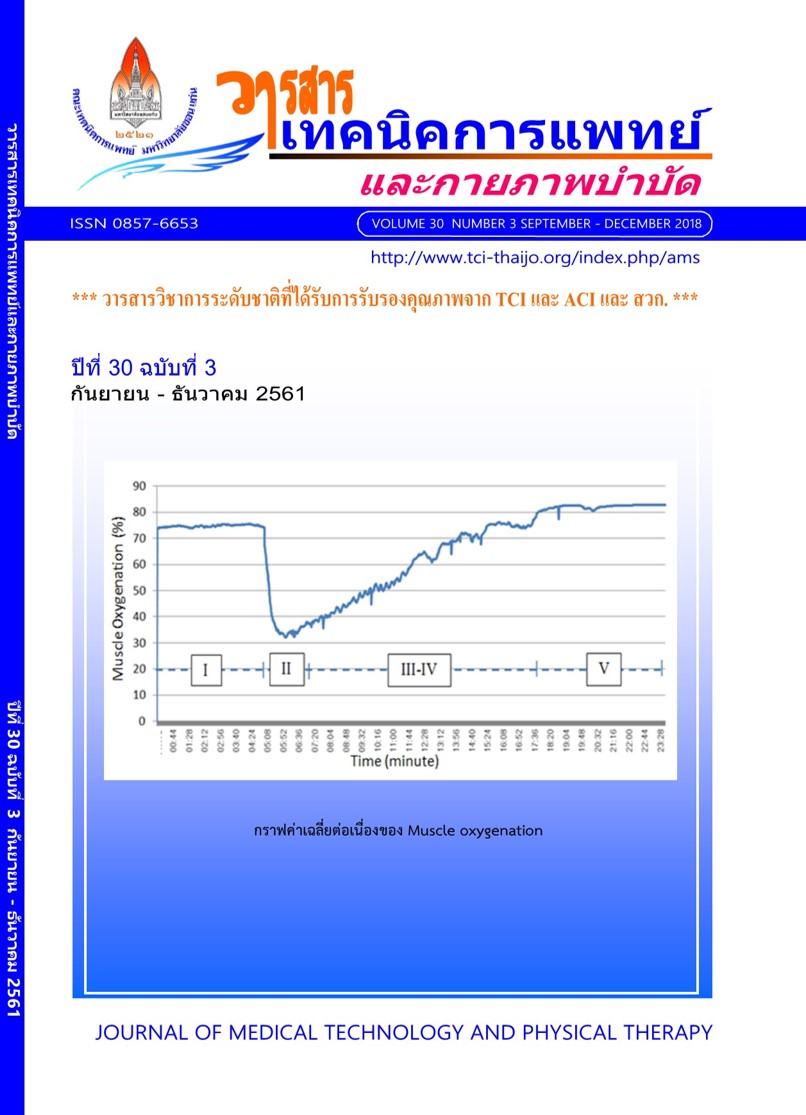Immediate Effects of Isometric Muscle Contraction on Muscle Oxygenation and Muscle Torque
Main Article Content
Abstract
This research aims to investigate the change of muscle oxygenation level of quadriceps muscle in each period of contraction including the correlation between the muscle oxygenation level and quadriceps muscle torque. A before-after study design was applied to 26 voluntary healthy males who were between 18-35 years of age. All of them performed series of 10s of sustained contraction and 5s rest until they reached peripheral fatigue point. Vastus lateralis muscle oxygenation levels were continuously recorded through MOXY while muscle torque was recorded through Fix Electronic Scale. The average age of voluntary healthy males was 22.62 ± 2.43 years. Average muscle oxygenation level during resting period (SmO2rest) was 74.84 ± 10.88. Average muscle oxygenation level during highest muscle torque period (SmO2highest) was 22.88 ± 14.35. In addition, muscle oxygenation level during SmO2highest period decreased -51.96% (value between 45.88% and 58.04%) compared to muscle oxygenation level during SmO2rest, that statistical significance (P<0.01). Moreover, a negative correlation between muscle oxygenation level during SmO2highest and quadriceps muscle torque was found (r = -0.41, P<0.01). In brief, highest muscle torque has an effect on immediate decrease of muscle oxygenation level. When muscle torque decreases, muscle oxygenation level tends to get higher. Therefore, it can be concluded that negative correlation between muscle torque and muscle oxygenation level is caused by peripheral vascular occlusion.

